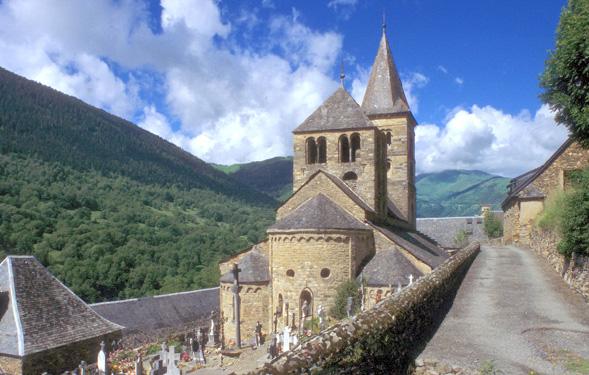Church of Saint-Aventin-de-Larboust

The church of Saint-Aventin is a Romanesque church dating from the end of the 11th and 12th centuries. It is composed of a nave with a semi-dome vaulted apse and two side aisles each with an apse. The open belfry with semicircular bays dates from the 11th century. The main interest of this small mountain church lies in its lapidary heritage, in particular its portal whose tympanum is decorated with a Christ in Majesty whose mandorla is supported by four angels each bearing a symbol of the four evangelists.
About this building
The church, built in rubble, has outstanding features such as two bell towers, an asymmetrical Lombard Romanesque chevet and the presence of Gallus-Romanesque altars. The church is built on a simple basilical plan, a rectangle with only the portal and apse and its apses projecting to the east. The interior is divided into a nave flanked by two narrow aisles. The nave is vaulted with ribbed arches on doubleaux resting on backsplash piles. It is illuminated by double splayed windows, as well as two oculi in the apse, situated higher than the windows. The church had received a painted decoration, revealed in 1878 when it was cleared of later whitewash. In front of an arcade, on either side of a window, one can see on the left Saint Aventine, and on the right Saint Sernin or Saturnin, bishop of Toulouse. The semi-dome of the apse represents Christ in majesty, and painted decorations appear in various places in the church.





